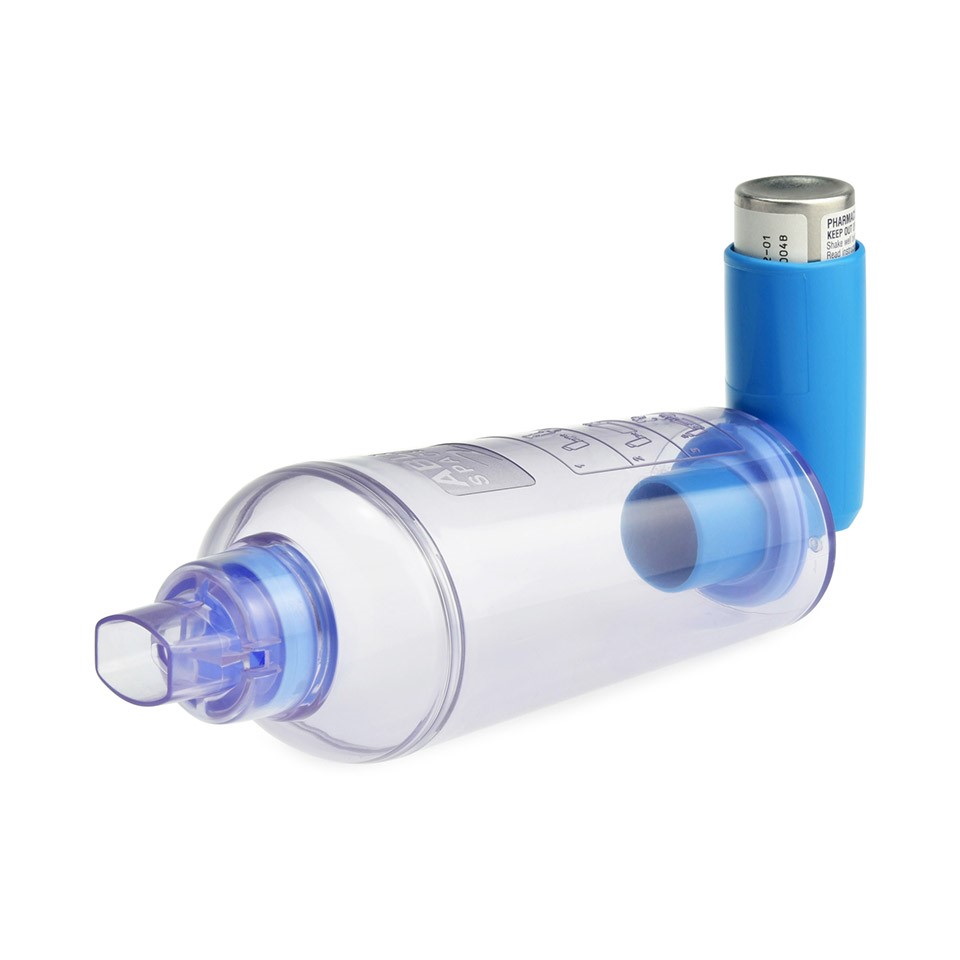INHALER TREATMENT
Written By: Dr. Amol Kumar Diwan Date : 12/02/2020

Even though the history of modern-day inhalers is relatively recent, human beings are known to use inhalation of smokes of herbal drugs for relief from coughs for centuries. Fumes of different herbs had been used in India, China, Egypt and Greece for long before the Christian era. Indians used fumes of stramonium and hemp while the Egyptian produced vapours of black henbane by heating the weed on hot bricks. Dhatura continued to be smoked for its cough relieving properties practically throughout the past five millennia in most of the ancient cultures in the world. Inhalation has been also popular to get a kick from habituating drugs. Today, inhalational treatment constitutes the corner-stone of therapy for asthma and other respiratory disorders.
There are numerous misgivings about inhalational treatment. Essentially speaking, inhalation is only a method of drug-delivery. It is not a treatment in itself. There are a number of drugs which can be used as inhalational drugs. Respiratory diseases such as asthma and chronic obstructive pulmonary disease (COPD) are the most common diseases for which inhalational treatment is preferred. The inhalational route is also employed sometimes for certain types of cough, infections and other diseases.

Inhaler Therapy
Treatment for asthma is best administered in the form of inhalers. Contrary to the general belief that inhalers are better reserved for non-responsive or severe asthma, they are used ideally as the first line of therapy. Use of inhalers for asthma can be compared to using ointments for skin diseases and eye drops for eye condition. Inhaler medications deliver the drug to the site of the disease. Therefore:
- The effect is almost instantaneous
- Dose required is about one tenth of the tablet or a capsule
- Side effects are negligible.
Fortunately, most of the drugs used both to relieve symptoms of asthma (relievers) and to control the disease (controllers) are now available as inhalers.
SOME MYTHS ABOUT INHALERS
- Costlier
- Difficult to understand the proper use
- Addicting in nature
Costs: Although the initial cost of the drug in an inhaler (compared to a tablet) is higher, in the long run an inhaler drug works out to be more economical. Better control of asthma reduces the periods of absence from work or school. Furthermore, all the expensive hospital bills of poorly controlled asthma are saved.
Difficulties to use: Proper use of inhalers requires good understanding of the technique. It is especially challenging to the elderly and small children. With time and patience (for both the doctor and the User) proper use of inhalers can be explained well to ensure their effective use.
Incorrect use is the most common reason for poor response to inhalers.
Addicting in nature: There is no true addiction to inhalers. Inhalers are not drugs but the method of using a drug. Anti-asthma drugs used in inhalers are non-addicting, purely for relief and control of asthma. Sometimes, an individual keeps on using puffs of inhalers to get relief from symptoms. This type of ‘addiction’ must be avoided. One should consult the doctor if the need for use of inhalers increases. Additional treatment may be required.
Types of inhalers
There are two types of inhalers in use:
- Metered Dose Inhalers (MDI)
- Dry Powder Inhalers (DPI)

Besides inhalers, nebulization is also a method of drug-administration in an inhalational form. Many drugs are also available as ‘nebulizing solutions’ for use with a nebulizer. Nebulizer is a compressor driven machine that breaks the drug solution into a vaporized form of fine particles Nebulization is used for severe attacks when inhalers are difficult to use or in case of children and the elderly who have problems coordinating the use of inhalers.
Metered Dose Inhalers (MDI): An MDI contains drug in a liquid state inside a pressurized canister. With each actuation of the inhaler, a fixed amount of the drug is released in the form of a ‘puff’ containing drug-droplets of uniform size. The released drug is then inhaled deep into the lungs by the user for its effects.
Remember that
- Inhalers are the preferred than tablets and injections
- Inhalers are Safe
- Inhalers are Non-addictive
- Inhalers are Effective
- Most inhalers contain similar drugs as in tablets, capsules, syrups and injections of same name
- The dose of the drug is very small
- The drug is delivered to the site of the problem – i.e. the lung.
How to Use An Inhaler?
Remember that the most important cause of failure of inhalational treatment is a wrong technique employed for inhalation. A good coordinated effort is required at each step of inhalation. There are some variations in the use of metered dose aerosol and dry-powder inhalers available from different manufacturers.
- Carefully read the instructions on the pamphlet supplied with the drug.
- Practice in front of your doctor/asthma educator.
- DO NOT HESITATE to ask questions.
- Always rinse your mouth and spit the water after an MDI or DPI is used. Some steroid inhalers can result in hoarseness of voice and fungus growth in the mouth in a small percentage of patients. Rinsing mouth prevents these problems.
The exact steps of M.D.I. use are listed below:
- Remove the mouth piece cover
- Hold the MDI between your thumb at the bottom and index finger on the top of the canister.
- Shake the inhaler well.
- Breathe out through your open mouth
- Place the mouthpiece of the MDI between your teeth or 3 fingerbreadths away from mouth.
- Close your lips and slightly tilt your head backwards.
- Start taking a slow and long breath.
- When you start inhalation, press the canister down (actuation) to release one dose but DO NOT HOLD YOUR BREATH WHEN YOU RELEASE THE DRUG.
- Continue inhalation to your maximum inspiration.
- Remove the inhaler from your mouth.
- Hold your breath for about 10 seconds or as long as you can.
- Breathe out slowly. This completes one cycle.
If you need another dose, repeat all the steps after a gap of one or two minutes. There are three important steps in the use of an inhaler:
- ACTUATION (of inhaler) and RELEASE (of the drug from the canister)
- INHALATION (inspiration) into the lungs
- RETENTION of the drug in the lungs
Actuation, Release and Inhalation require a good understanding and a degree of coordination by the patient to avoid wastage of the drug and ensure its proper delivery into the lungs.
‘Retention’ of the drug requires breath-holding for as long as possible (usually about 6-10 seconds), to allow absorption (of the drugs) into the lungs. Some people find it easier to use their inhaler with a device called a spacer.
Whatever type(s) of inhaler you're using, the most important thing is that you get your inhaler technique checked regularly. If you're using your inhaler(s) correctly, then you'll get the full benefits of the medicine and you'll be more likely to stay well with your asthma.

How to improve drug delivery to the Lungs?
Several methods are used to overcome the problem of coordination with MDIs. The use of a ‘spacer’ between the inhaler and the mouth is one such device. The use of a spacer makes the inhalation easier. The spacer is attached with a mouthpiece at one end and an MDI at the other. The drug from the MDI is released in the spacer and inhaled from the other end by the patient. Many different kinds of spacers are available in the market. The newer ones are more compact than the older ones.
Dry Powder Inhalers (DPI):
A DPI contains the drug in a finely micronized powder form. There are several types of DPIs available in the market. The greatest advantage of DPIs is the ease of use – the drug is released only on inspiration. The steps of Actuation, Release and Inhalation are therefore, much better coordinated and no wastage of drug occurs. Inhalation from Dry Powder Inhalers is also easier. There is no difficulty in coordinating between the release of drug and the actual inhalation since the drug is released only during an inspiratory effort.
While new devices for inhalation are being developed on a regular basis, one can also anticipate that the inhalation route in future will be used for administration of a number of drugs other than the anti-asthma medicine
Side effects of steroid inhalers
Steroid inhalers usually cause few or no side effects if used correctly and at normal doses.
Some people get:
- a sore mouth or throat
- a hoarse or croaky voice
- a cough
- oral thrush – a fungal infection that causes white patches, redness and soreness in the mouth
- nosebleeds